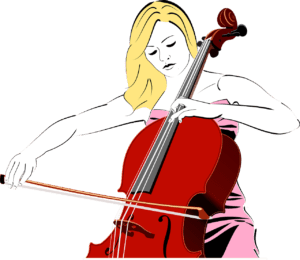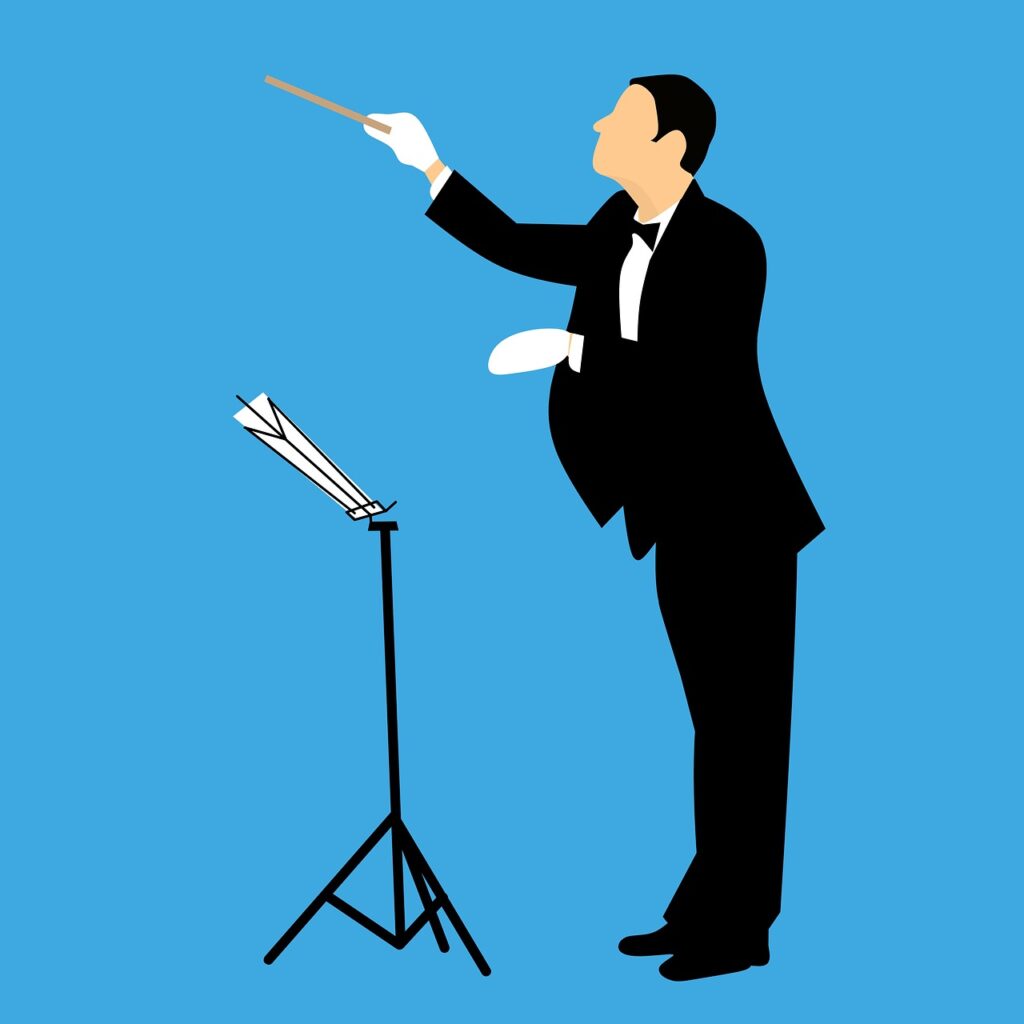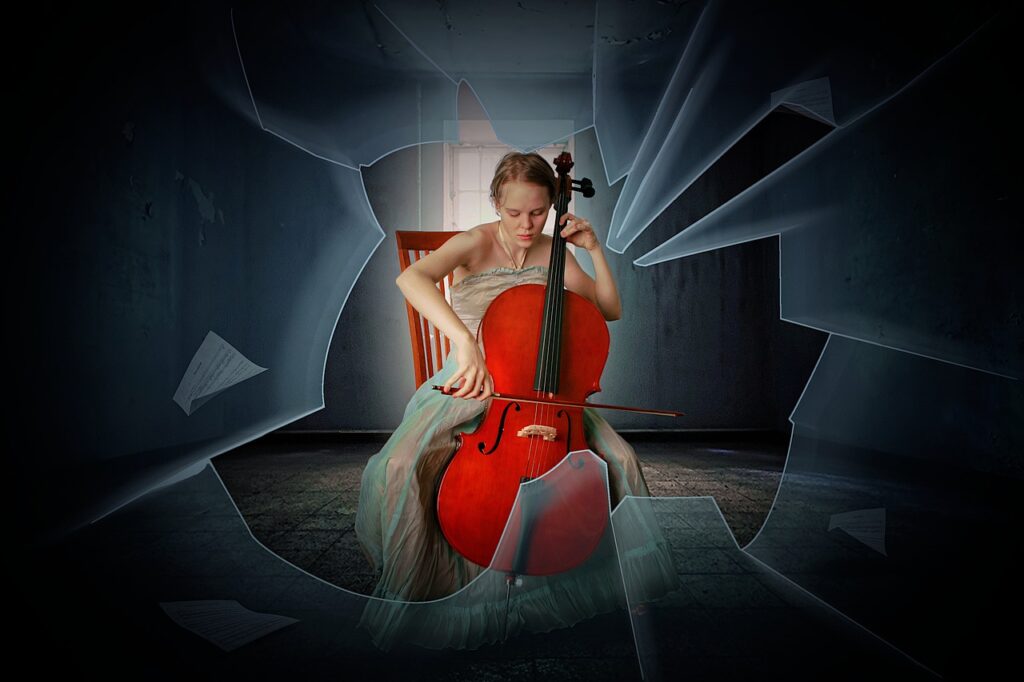There are a number of issues I see over and over with beginning adult cello players. So, I decided to share this list with you in the hopes of helping you understand why some things seem so difficult, and how to fix these issues.
These are the top 6 mistakes made by beginning adult cello players (and tips on how to fix them).
When you watch the video above or read the items below, you may may recognize this to be true for you. Don’t fret because you have plenty of time to remedy your troubles. Good to do it now, and before you get overly frustrated or consider quitting. Don’t quit! Stay with it – learning an instrument as an adult has unlimited benefits.
MISTAKE #1
The wrong size instrument.
I can’t stress that enough. A lot of people play on an instrument that is too large. A smaller instrument is easier to play. In fact, I think it’s the best kept secret among cellists. You have to be on an equal playing field to make real progress. Think about it… large people with large hands have a substantial advantage over smaller people with smaller hands. You can always size up an instrument later on, but the frustration you will encounter as a beginner -(on a cello which is too big) might be something you can’t overcome. And if you think this might be the case for you – go try a smaller cello. If you’ve been placed on a full size cello but you are struggling with the left hand stretch, give a 7/8 cello a try. If you are a REALLY small person, you might even try a 3/4 cello. If you get a high-quality rental, you will be quite happy with the outcome. I virtually never have anyone come back to a lesson and tell me they don’t like the smaller instrument. Quite the opposite. Most everyone comes back to a lesson to tell me how much easier it is to play a smaller cello. And that is why this issue is my #1.
MISTAKE #2
Improper bow hold.

This is a tricky one. It’s tricky because there is a basic bow hold that we all learn, but there are variances of the bow hold. In reality, you are not really holding the bow – you just have weight on the bow and you are guiding the direction it is going. Try to always think about the bow as an extension of your arm and hand (a really long extension) and feel the good stick of the the hair when it touches the string throughout ALL of your right arm and hand. The bow hold starts in the back and the shoulder. If your shoulder and your elbow are to high, you are in essence cutting off all the natural weight which needs to go into the bow hair.
Flexibility with the bow hand is also crucial. That is where much of the nuance in the playing comes from. If you watch a little kid wave, they wave with a relaxed, flexible wrist. That is the natural way the wrist wants to move. Same is true of the bow hold. Allow the wrist to be flexible. You really can’t get a smooth bow change without a flexible wrist. A correct bow hold takes constant practice. I think I had to re-learn it about three times throughout my formative years. But eventually, I understood.
MISTAKE #3
Too much tension in the body.

Again, this is a tricky one because as a new cellist you have tension. It’s not natural yet. It’s awkward. But just like you can learn to have the bow become an extension of your arm, you can learn to have the cello become an extension of your body. If the cello has been set up correctly on you, you will already be one step ahead. You are in a good position to becoming more relaxed with your cello. There are a couple techniques which I believe help us become aware of a more relaxed body. The first is all about breathing. When you inhale, breath in deeply and let your arms and shoulders rise. When you exhale, exhale deeply and let your shoulders arms fall as low as you can get them. You can also massage your arms and hands. Who doesn’t love a massage? Just squeeze the muscles all up and down your forearms for a minute or so and feel how much more relaxed you will be.
I always have my beginners do the cello hug. The cello hug is a great indicator of whether your cello is placed correctly on your body. Simply cross your arms and put your hands on the upper part of the C-bout. Gently rock back and forth by swaying and lifting one ankle and then the next. Breath deeply while doing this.
MISTAKE #4
Attempting to make progress without the use of a metronome.
I get it. You have a great internal time clock and all that. But teachers don’t tell you to use a metronome ‘cause we just like telling you this, we tell you to use a metronome because it WORKS. It does. I probably would have progressed much quicker in my youth if I had used the metronome. The metronome is the ultimate truth-teller. You are placing music into space in time and it’s not random. We are all built to feel rhythm – whether that is a pace when walking or running or cleaning, etc… and music is no exception. One of the fundamental elements of music is rhythm.
I always her beginners say, “I can’t hear the metronome. I can’t play with it.” Well, guess what? That’s true for almost every beginning musician, ever. Musicians learned to play with the metronome by DOING it. The more that thing is clicking, the more often you will have the opportunity to jump into the beat. And I think the metronome is slightly hypnotic – in the sense that once you get int that groove of playing with and staying with the metronome, you WILL stay in that groove much longer than if you try practicing without it. Practice with a metronome. It will make or break your progress.
MISTAKE #5
Attempting to learn without any accountability.
That’s right. Adults are smart and savvy and have learned a lot in their lifetime and because of that, adults really believe they can go at this alone. Whether that means watching random Youtube videos (where there is lots of good info and plenty of bad info.), or trying to learn without a teacher, or trying to learn without a buddy. Having another partner in the process is a real barometer of success. When you feel accountable to someone else, you are more likely to work at it and continue with it. That may mean you need a private instructor to meet with every week or every other week, or it might mean bringing a friend along for the ride. The two of you can meet for practice sessions, or just talk through what you are learning. It also might mean signing up for a community orchestra so you have a chance to meet with others who are learning along with you and can share in communal music making. However you look at it, be accountable to someone. You are more likely to continue playing the cello that way.
MISTAKE #6.
Attempting to learn much too quickly.
Adults are a little impatient. Learning the cello is a bucket list item for a lot of people (kinda like learning how to speak Spanish is for me – but I digress). Adults imagine the end product and don’t think enough about the journey. They want to make the best sound now – or play the hardest piece now… But it’s like anything else in life we learn, which is that every little step we take brings us that much closer to success. So — start slow. Start really slow. Enjoy every open string, every new note you learn, every metronome click you hear, every beautiful tone you produce, every new piece of music you conquer. And once you can get into the mindset of enjoying the NOW, you’ll be able to look back and in a year and and find yourself in awe of what you accomplished. And after a few years of this type of mindset, you should be playing fairly well. So, slow down. Enjoy the journey.
More detailed (free) info on the bow hold by the fabulous Paul Katz here: https://www.cellobello.org/cello-lessons/right-hand/bow-hold-principles-part-1/
Become a member of Cello Discovery to have access to hundreds of in-depth, sequential video lessons, interactive (play-along) music scores and a community of support. It’s fun and it’s affordable. https://cellodiscovery.com



